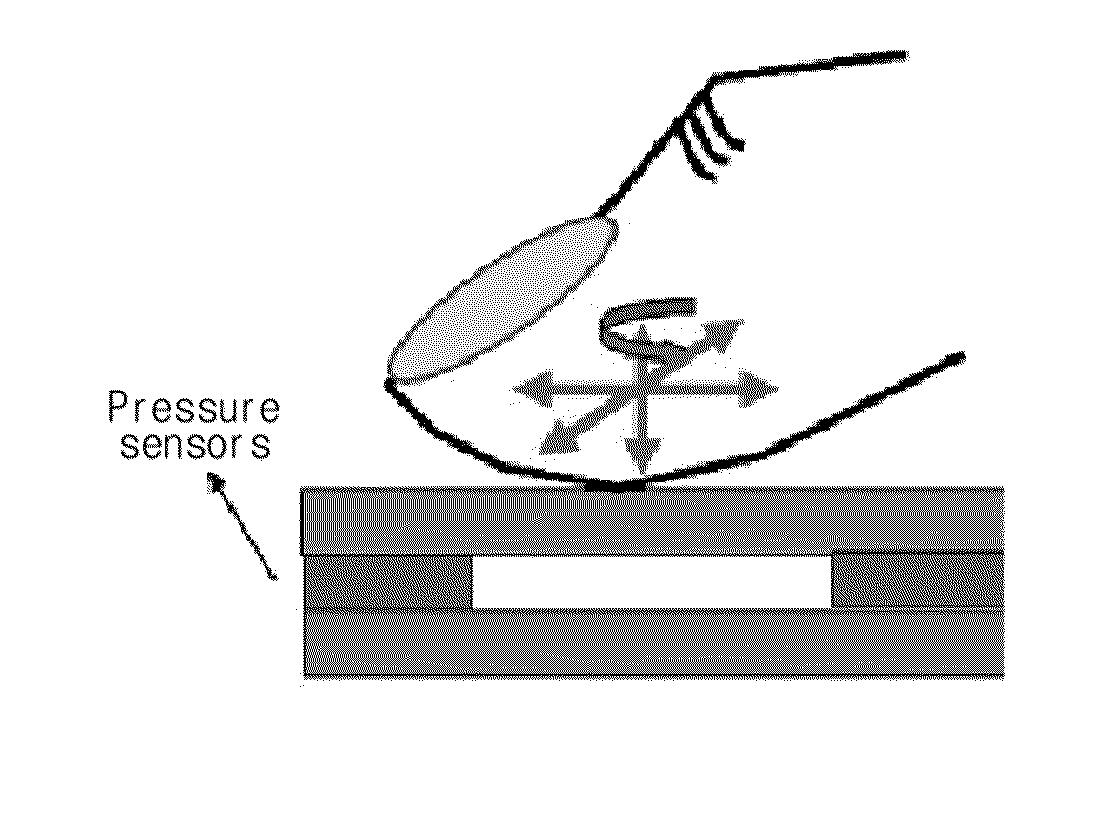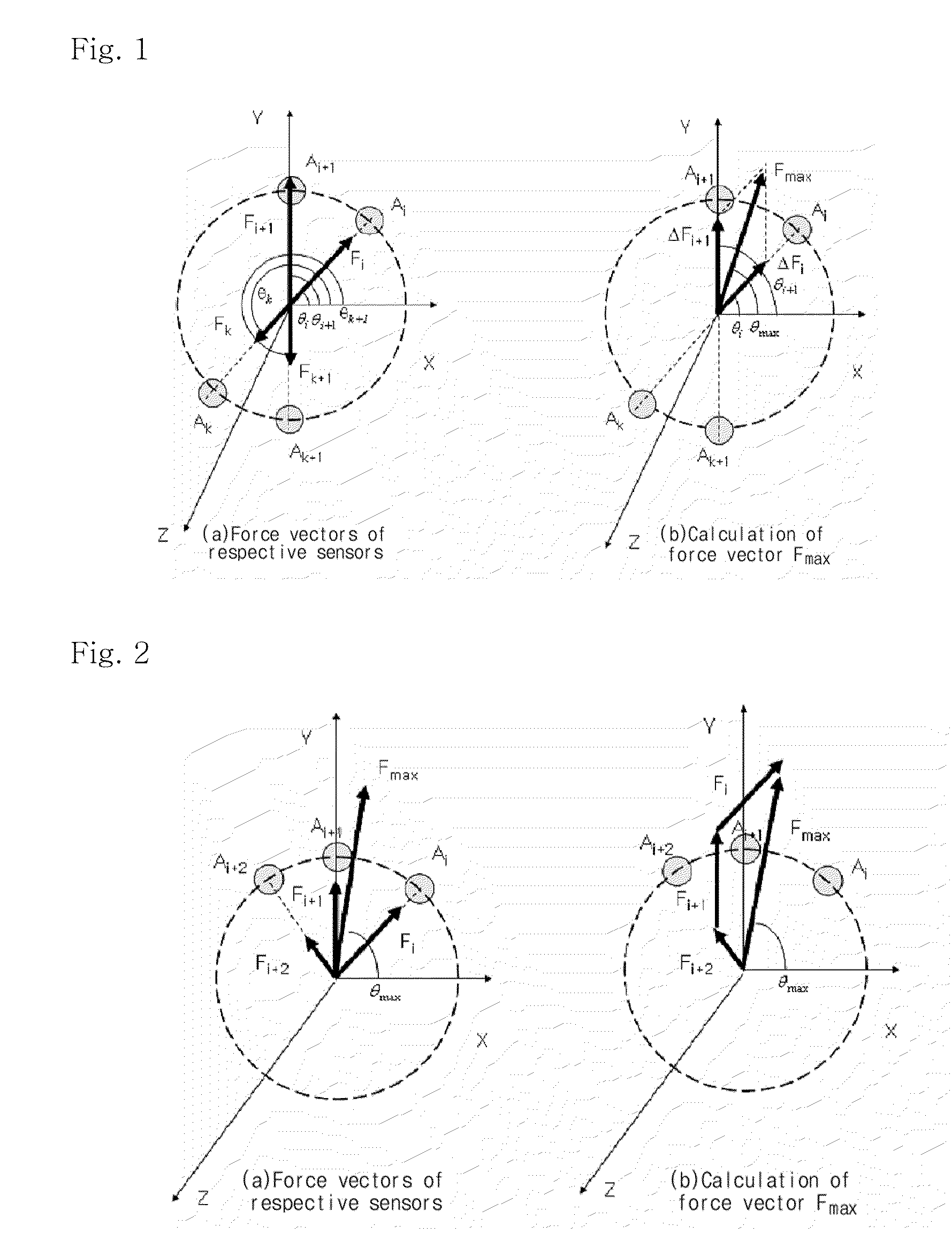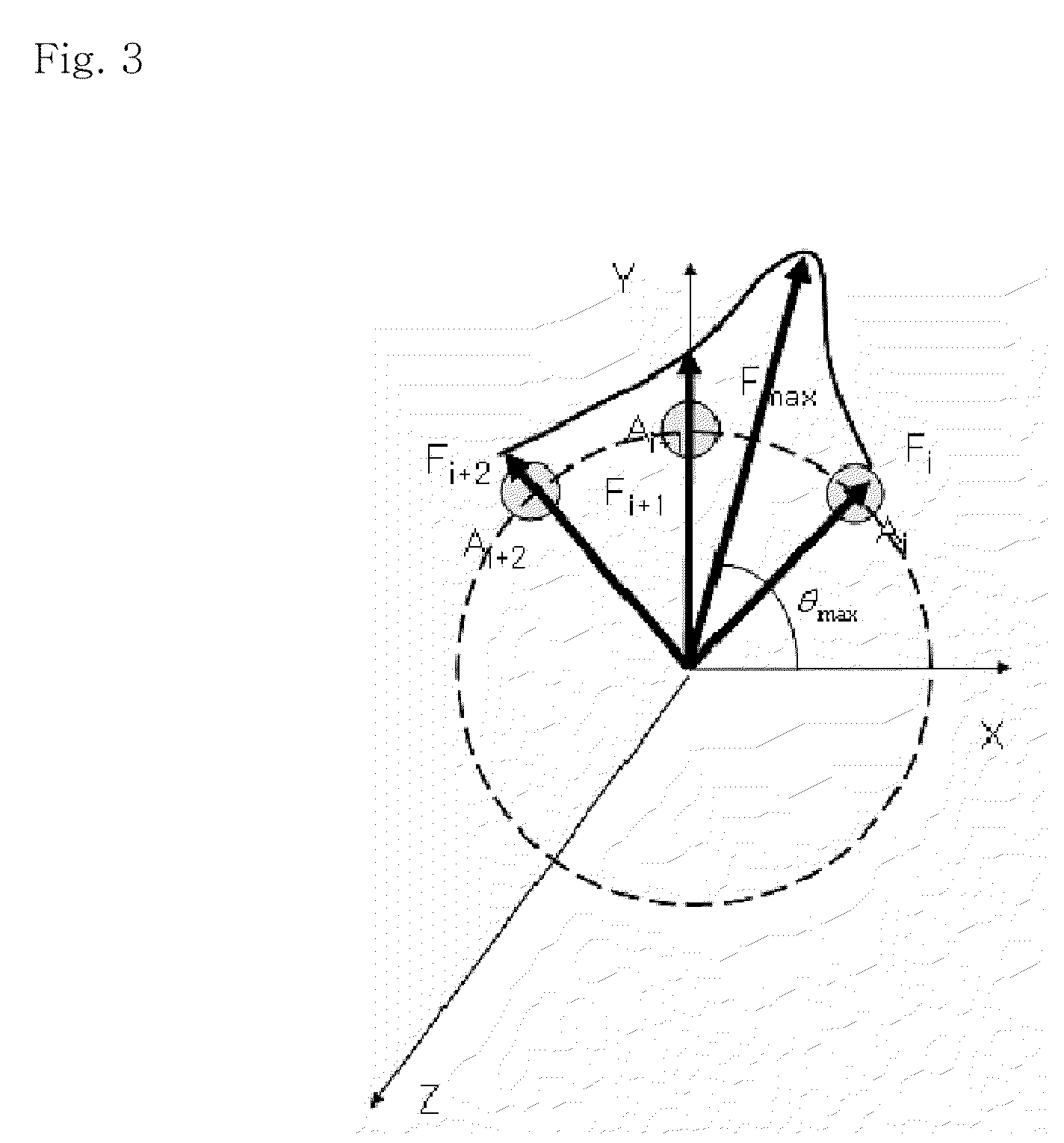Method for implementing mouse algorithm using tactile sensor
- Summary
- Abstract
- Description
- Claims
- Application Information
AI Technical Summary
Problems solved by technology
Method used
Image
Examples
first embodiment
[0032]the present invention will hereinafter be described with reference to FIGS. 1A and 1B. First, as shown in FIG. 1A, force vectors Fi, Fi+1, Fk and Fk+1 having magnitudes |Fi|, |Fi+1|, |Fk| and |Fk+1| and X-axis angles θi, θi+1, θk and θk+1are obtained from arbitrary sensors Ai, Ai+1, Ak and Ak+1 representing the outputs of force, among the plurality of pressure sensors, respectively.
[0033]Then, the X-axis angles θi and θi+1 and magnitudes |Fi−Fk| and |Fi+1−Fk+1| of force vectors ΔFi and ΔFi+1 are calculated using the force vectors Fi, Fk, Fi+1 and Fk+1, as shown in FIG. 1B.
[0034]Then, a force vector Fmax of the contact point having an X-axis angle θmax and a magnitude |Fmax| is calculated using the X-axis angles θi and θi+1 and magnitudes |Fi−Fk| and |Fi+1−Fk+1| of the vectors ΔFi and ΔFi+1, and the moving distance and direction of a mouse cursor are sensed from the calculated force vector Fmax.
[0035]Here, the moving distance of the mouse cursor may be calculated based on the m...
second embodiment
[0036]the present invention will hereinafter be described with reference to FIGS. 2A and 2B. First, a force vector Fi+1 of an (i+1)th sensor Ai+1 having a maximum magnitude of force, among a plurality of pressure sensors around the contact point, and force vectors Fi and Fi+2 of an ith sensor Ai and (i+2)th sensor Ai+2 located at both sides of the (i+1)th sensor Ai+1 are found as shown in FIG. 2A.
[0037]Then, a force vector Fmax having the sum |Fmax| of the magnitudes of the force vectors Fi+1, Fi and Fi+2 of the (i+1)th sensor Ai+1, ith sensor Ai and (i+2)th sensor Ai+2 and an X-axis angle θmax is calculated as shown in FIG. 2B.
[0038]Then, the moving distance and direction of a mouse cursor are calculated using the force vector Fmax. Here, the moving distance of the mouse cursor may be calculated based on the magnitude sum |Fmax| and the moving direction of the mouse cursor may be calculated based on the X-axis angle θmax, or the magnitude sum |Fmax| may be defined as |Fmax|cosθmax+...
third embodiment
[0039]Referring to FIG. 3, in the present invention, a force vector Fi+1 of an (i+1)th sensor Ai+1 having a maximum magnitude of force, among a plurality of pressure sensors around the contact point, and force vectors Fi and Fi+2 of an ith sensor Ai and (i+2)th sensor Ai+2 located at both sides of the (i+1)th sensor Ai+1 are found.
[0040]Then, a magnitude distribution function F(θ)=aθ+a1θ+a2θ2 is obtained by fitting force magnitudes |Fi|, |Fi+1| and |Fi+2| corresponding respectively to the coordinates of the ith sensor Ai, (i+1)th sensor Ai+1 and (i+2)th sensor Ai+2 to a quadratic curve.
[0041]Then, an X-axis angle θmax where the maximum force magnitude is present is obtained, a force vector Fmax having a maximum magnitude |Fmax| at the angle θmax is obtained from the magnitude distribution function, and the moving distance and direction of a mouse cursor are calculated using the obtained force vector Fmax.
[0042]Here, the moving distance of the mouse cursor may be calculated based on ...
PUM
 Login to View More
Login to View More Abstract
Description
Claims
Application Information
 Login to View More
Login to View More - R&D
- Intellectual Property
- Life Sciences
- Materials
- Tech Scout
- Unparalleled Data Quality
- Higher Quality Content
- 60% Fewer Hallucinations
Browse by: Latest US Patents, China's latest patents, Technical Efficacy Thesaurus, Application Domain, Technology Topic, Popular Technical Reports.
© 2025 PatSnap. All rights reserved.Legal|Privacy policy|Modern Slavery Act Transparency Statement|Sitemap|About US| Contact US: help@patsnap.com



